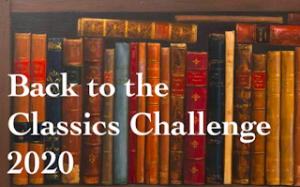
In an era dominated by advanced technology and cutting-edge automotive innovation, classic cars serve as a testament to the rich history and cultural significance of the automotive industry. These iconic vehicles evoke nostalgia and represent a pivotal era in technological advancements. To ensure the preservation of these remarkable pieces of history, museums play a crucial role in the conservation and showcasing of classic cars. This article delves into the importance of museums in preserving heritage through classic car conservation.
Curating the Timeless
Classic cars are more than just automobiles; they are living sculptures that capture a moment in time. Museums act as guardians of these priceless artifacts, curating and preserving them for future generations to appreciate. By meticulously collecting vehicles from different eras, museums create a comprehensive and diverse range of classic cars, each with its own unique story and significance.
Through thoughtful curation, museums ensure that the heritage of classic cars is celebrated and understood. Visitors have the opportunity to immerse themselves in the history of the automotive industry, gaining a deeper understanding of the technological advancements and design influences that shaped the world of transportation.
Restoration and Preservation
Preserving classic cars requires a delicate balance between restoration and conservation. Museums possess a wealth of knowledge and expertise when it comes to restoring these vintage vehicles to their former glory. Utilizing a combination of traditional craftsmanship and modern techniques, skilled professionals work tirelessly to maintain the authenticity and originality of the cars in their care.
Restoration efforts involve extensive research to ensure that the process remains true to the original specifications of each vehicle. Museums act as custodians of historical accuracy, ensuring that every component, from the engine to the smallest details, is restored to perfection. By doing so, museums preserve the integrity and originality of classic cars, allowing visitors to witness these stunning machines as they were intended to be.
Conservation is equally important in classic car preservation. Museums employ various methods to protect these vintage vehicles from deterioration caused by environmental factors such as humidity, sunlight, and temperature changes. Customized storage facilities and controlled exhibition environments create an ideal climate, preventing irreversible damage and extending the lifespan of these precious artifacts.
Education and Outreach
A key role played by museums in classic car conservation is education. By offering exhibitions, workshops, and educational programs, museums provide the public with invaluable opportunities to learn about classic cars and their historical significance. This educational outreach ensures that future generations appreciate the heritage and craftsmanship behind these timeless vehicles.
Through interactive displays and informative exhibits, museums foster a deeper connection between visitors and classic cars. The incorporation of multimedia and virtual experiences further enhances engagement, allowing individuals to virtually explore the inner workings of classic vehicles and gain a comprehensive understanding of the engineering marvels that these cars represent.
Preserving Cultural Legacy
Classic cars are not merely objects but rather symbols of cultural legacy and automotive history. Museums strive to cultivate an appreciation for this rich heritage and to inspire a new generation of enthusiasts and collectors.
By promoting the preservation of classic cars, museums ensure that the stories and memories associated with these vehicles endure. The profound impact of classic cars on society and popular culture cannot be overstated, and museums play an integral role in honoring and protecting this legacy.
Conclusion
Museums serve as beacons of preservation in the fast-paced world of automotive advancements. By curating, restoring, and conserving classic cars, these institutions safeguard our cultural heritage and inspire future generations. The efforts of museums in the realm of classic car conservation ensure that these iconic vehicles continue to enthral and captivate audiences, allowing us to connect with the past and appreciate the enduring charm and brilliance of classic automobiles.

